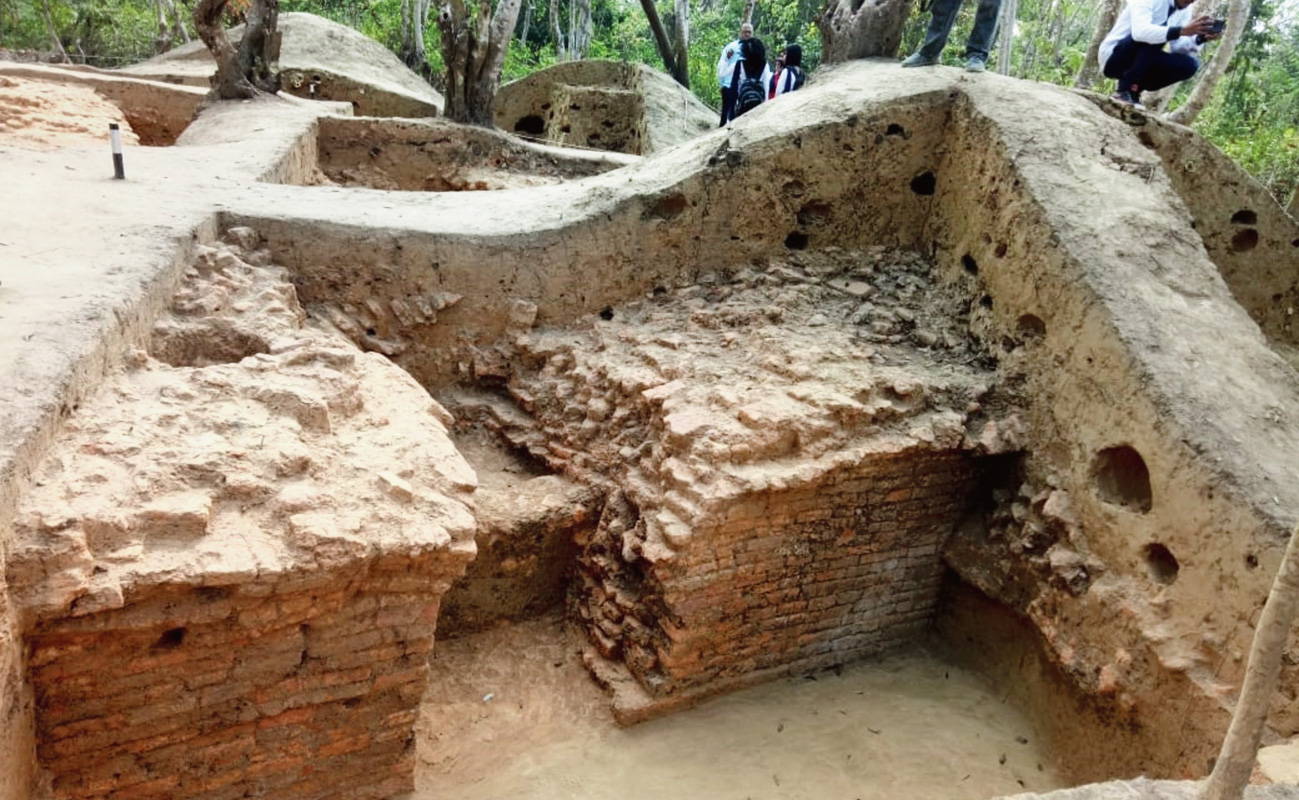The recovery of the ruins of the Kachari kingdom of Assam dating back to the 7th to 8th century AD at Barpathar in Golaghat district of Upper Assam’s Golaghat district has created sensation among historians.
A team of the experts of the archaeological department of Assam, along with students from different colleges, started an excavation at Dubarani Alichinga and discovered ruins of historical importance.
The team of 14 members, headed by technical officer of the directorate of archaeology department, Assam, Nabajit Deuri, along with Sabina Hasan, Nayanika Das and the students of Deccan College of Pune, Cotton University and research scholars of Gauhati University, began the excavation on December 25.
The team excavated an area of nearly2 square km, and recovered an old house, balcony and valuable materials.
Discovering water forts on the premises, it is believed that the ruins date back to the 7th to the 8th century.
The Kachari king had ruled Dhansiri valley at the time.
Samples of the excavated remains were sent to the archaeological laboratory at Dehradun, Uttarakhand, for testing.
After receiving the information of the excavation, a team from the department of history of Devaraj Roy (DR) College, Golaghat, led by Tasadduk Amanul Hussain, rushed to the spot and started a study.
Hussain told The Telegraph that the ruins were obviously of the Kachari kingdom.
The Kachari dynasty had set up its first capital at Duarani.
“The stone inscription signed by king Basundhar Barman recovered at Khanikargaon Sarupathar in Dhansiri sub-division is the oldest stone inscription of Assam. The presence of ruins of the Kachari kingdom in the area is common,” he said.
The researcher sad the ruins would provide evidence of a rich and cultured civilisation of 600 BC and earlier.
“The complete excavation will bring out an evidence of a mini Mahenjodaro at Barpathar,” he added.
The researcher said the Kachari kings set up the capital at Duarani and then shifted to Kachamari.
However, the Ahom kings compelled them to leave and they later set up capital at Dimapur and then at Maibong and finally at Khaspur in North Cachar Hills district of Assam.
Archaeological excavation in the area was started in 2013.
“The Golaghat district administration is keen to extend its cooperation to complete the excavation and study of the ruins. The additional deputy commissioner (ADC) of Golaghat, Utpal Doley, told this correspondent.
He said the materials would be scientifically preserved as a tourist attraction.
During his service as the circle officer of Sarupathar, Doley planned an archaeological park with the scattered stone statues at Sarupathar in 2003.











